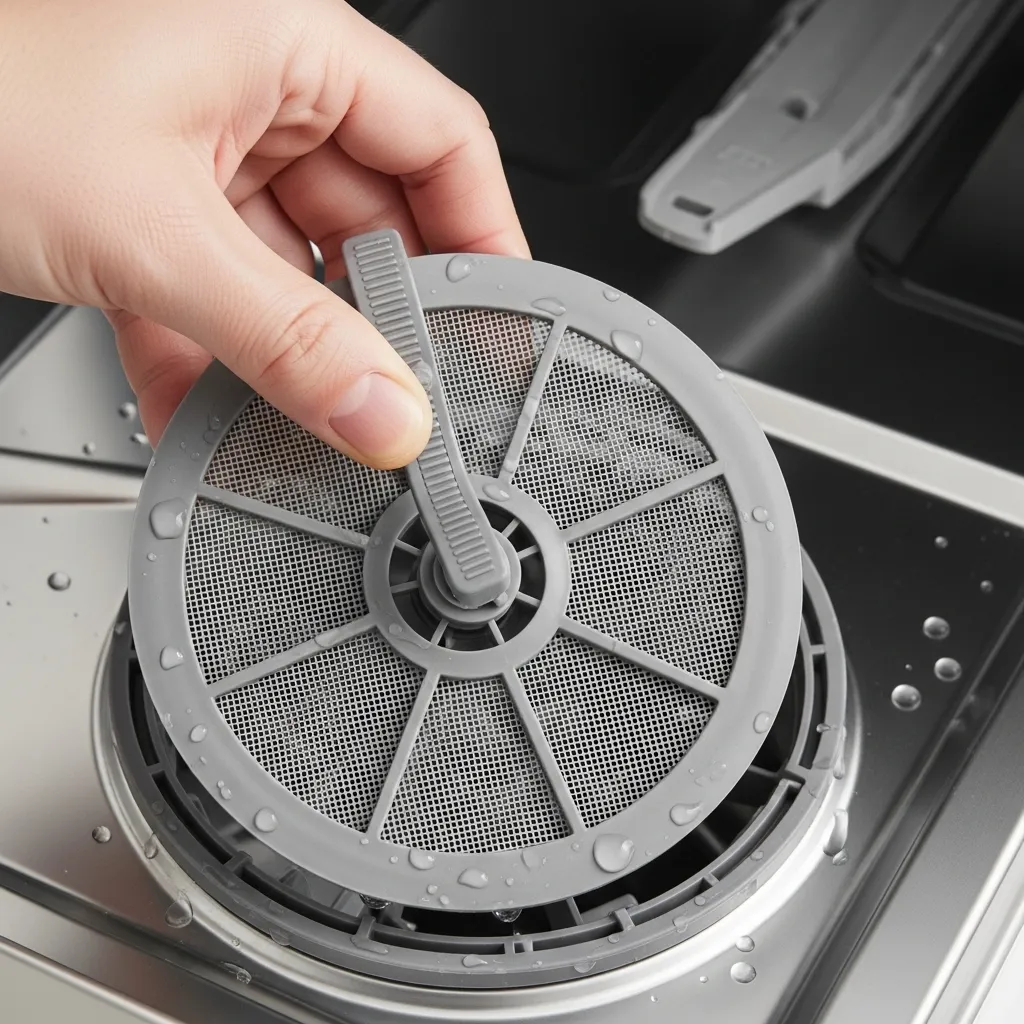
Beyond Loading: Essential Dishwasher Maintenance for Peak Performance
A properly loaded dishwasher is only half the battle. To keep your machine running efficiently and effectively for years to come, simple, regular maintenance is essential. These tasks take only a few minutes but can prevent poor performance, bad odors, and costly repairs down the road.
Clean the Filter Regularly
This is the single most important maintenance task. The dishwasher filter, located at the bottom of the tub’s interior, traps large food particles and debris to prevent them from clogging the drain pump. A dirty, clogged filter will impede water flow, lead to dirty dishes, and can cause unpleasant odors.
How to Clean It: Most modern filters are a simple two-part cylinder that you can remove by twisting it (usually counter-clockwise). Once removed, rinse the mesh screen and the inner cylinder under warm running water. Use a soft brush to gently scrub away any stubborn or greasy buildup. Most filters do not need soap. Simply rinse until clean and lock it back into place.
Cadence Mini-Example: Appliance experts recommend cleaning the filter at least once a month, or more often if you have a large family or tend to wash heavily soiled dishes. Let’s create a simple schedule. If you run your dishwasher 5 times per week, that’s approximately 20 cycles per month. A good rule is to check the filter every 20-30 cycles. So, setting a recurring calendar reminder for the first Saturday of every month is a perfect, easy-to-remember cadence.
Inspect and Clean the Spray Arms
Over time, the small holes in the spray arms can become clogged with mineral deposits (from hard water) or tiny bits of food. When this happens, the water jets become weak and uneven. About once every few months, remove the spray arms (they usually unscrew or unclip easily) and inspect the holes. Use a toothpick, a paperclip, or a small piece of wire to gently poke out any debris. Rinse the arm thoroughly before re-installing it.
Run a Cleaning Cycle
Even with a clean filter, soap scum and mineral deposits can build up inside the dishwasher’s tub and hoses. To keep the interior fresh and sanitary, run a dedicated cleaning cycle every 1-3 months. You can use a commercially available dishwasher cleaning tablet or, in many cases, a simple cup of white vinegar. Place a dishwasher-safe bowl containing one cup of white vinegar on the top rack of the empty dishwasher and run a hot water cycle. The acid in the vinegar helps to break down grease and mineral buildup. Important: Always consult your dishwasher’s manual before using vinegar, as some manufacturers advise against it.
When to Call a Pro
While these DIY maintenance tasks can solve most common issues, some problems require professional help. If you notice standing water that won’t drain, loud or unusual grinding noises, any signs of a water leak around the machine, or electrical issues, it’s time to stop using the dishwasher and call a qualified appliance repair technician. For questions about chemical safety when using cleaners, you can always contact Poison Control (U.S.) for guidance.

















